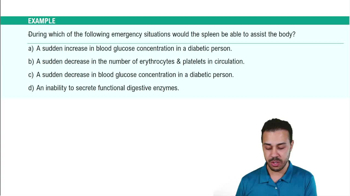Textbook Question
Answer questions 5 through 10 by choosing responses from the following:
a. ammonium ions
b. bicarbonate
c. calcium
d. chloride
e. hydrogen ions
f. magnesium
g. phosphate
h. potassium
i. sodium
j. water
Two ions produced during catabolism of glutamine.
206
views




